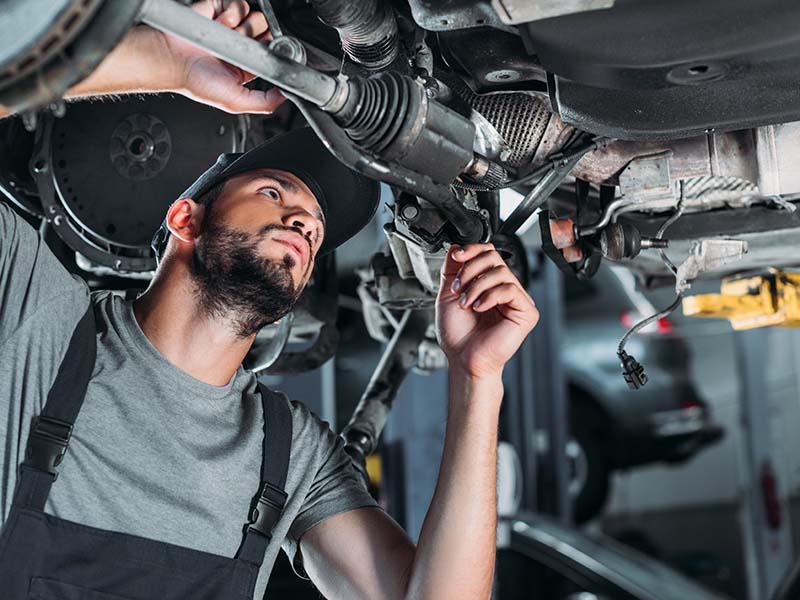All Categories
Featured

Few things are more alarming for a driver than the sudden illumination of the check engine light (CEL) on the dashboard. While it might activate immediate worry, understanding what this light represents can equip you to handle the situation successfully. Let's explore the feasible factors behind the CEL and the steps to resolve it.
What Does the Inspect Engine Light Mean? The CEL belongs to your car's onboard diagnostics (OBD) system. It monitors a variety of systems within the vehicle, consisting of discharges, fuel efficiency, and general engine efficiency. When the system spots a fault or abnormality, it triggers the CEL to notify the motorist.
Solid Light: Shows a non-critical concern, such as a minor sensor breakdown. It still requires focus to stay clear of long-lasting damages. Blinking Light: Signals a serious problem, like an engine misfire, that needs immediate interest to stop substantial damage. Common Factors for the Inspect Engine Light. Below are some of one of the most constant root causes of a CEL, varying from basic to complex:
Loose Gas Cap:

A broken or loosened gas cap can interrupt the gas system, activating the light. This is among the most convenient concerns to fix-- simply change the cap or tighten. Oxygen Sensor Failure:
The oxygen sensing unit gauges the air-to-fuel ratio for optimal combustion. A faulty sensing unit can lead to lowered fuel effectiveness and greater emissions. Spark Plug or Ignition Coil Problems:
These elements are essential for the burning process. Damaged ignition system or malfunctioning coils can create misfires and harsh engine efficiency. Catalytic Converter Troubles:
This element decreases unsafe discharges from your vehicle. Failing to resolve various other engine troubles can cause catalytic converter damage. Mass Air Flow (MAF) Sensing Unit Failing:
The MAF sensing unit ensures the correct amount of air blends with fuel. A filthy or stopping working MAF sensing unit can decrease power and fuel performance. Steps to Take When the CEL Comes On. Do Not Panic:
Take a moment to observe your car's efficiency. Is it driving normally, or are there signs and symptoms like decreased power or weird sounds? Inspect the Gas Cap:
If essential,Tighten or reseat it. This basic repair deals with several CEL instances. Utilize an OBD-II Scanner:
Connecting in a scanner offers specific trouble codes that identify the problem. Lots of automobile components shops use this service free of cost. If Required:, go to a Mechanic.
If the CEL stays on or flashes, have a professional evaluate your car. Delaying repairs could result in much more expensive repairs. Preventative Actions to Prevent CEL Issues. Routine Maintenance:. Follow the supplier's timetable for oil adjustments, trigger plug replacements, and air filter cleansing. Examine Key Elements:. Regularly inspect your gas cap, belts, and hose pipes for wear or damages. Usage High Quality Gas and Oil:. Premium items can avoid residue accumulation that might affect sensors and engine elements. Why You Must Deal With the CEL Without Delay. While it's appealing to ignore a solid CEL, laziness can bring about severe repercussions. What starts as a minor problem-- like a loose gas cap-- can evolve right into costly fixings. Addressing the light very early guarantees your vehicle remains reliable and risk-free.
Conclusion. The check engine light is not a cause for prompt panic, but it ought to never be overlooked. Recognizing its function and potential triggers equips you to make educated decisions, whether it's a quick gas cap adjustment or a trip to your technician. With appropriate upkeep and timely action, you can maintain your cars and truck running efficiently and prevent unneeded repairs.
Latest Posts
Find Affordable Auto Repairs with Montclare’s Exclusive Service Specials
Published May 26, 25
1 min read
Discover the Perks of Vinyl Fencing with Montana Fencing
Published May 21, 25
1 min read
Specialist Industrial Roof Solutions in North Platte, Nebraska
Published May 20, 25
2 min read